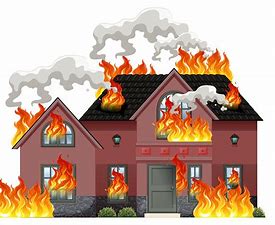Building a new home or considering a major renovation of your existing home? Consider installing or retrofitting with a fire sprinkler system. Sprinklers save lives.
One of the most significant threats to your home, its contents and those living there is a fire. Fire departments responded to approximately 1,318,500 fires in 2018 with about 73% of them being home fires that resulted in nearly 3,700 deaths, according to statistics reported by the National Fire Protection Association in May 2020. NFPA indicates that the possibility of death in a fire is 85% greater in a house without a sprinkler system.
SPRINKLER MYTHS
“I didn’t think it was possible to install a sprinkler system in my home.” “Aren’t sprinkler systems just for commercial and industrial businesses?” “Won’t installing a sprinkler system add significant cost to construction?” These are just a few of the myths about home sprinkler systems.
Let’s review some common concerns:
- Availability to install in a home. Fire sprinkler systems are designed for a wide variety of occupancies, including both residential and commercial buildings. NFPA research and development has published standards and codes outlining appropriate sprinkler design and installation requirements.
- Cost: Installing this life-saving protection may be less expensive than most people expect. Additionally, installation should not have a significant impact on the construction timeline.
- Sprinkler activation ruining property: Sprinkler systems are designed to activate only within an affected area. For example, if fire starts in a second-floor bedroom, only the sprinklers in that room activate initially. Sprinklers outside that area activate if the fire spreads.
- Retrofitting in existing home. While a retrofit may present some obstacles, in most cases it is possible to install a system in an existing home. Speak with a contractor who has experience with fire sprinkler installations.
SPRINKLERS BUY YOU TIME
The Home Fire Sprinkler Coalition illustrates timelines for fires in homes without and with a fire sprinkler.
COST TO INSTALL
The best time to install a home fire sprinkler system is during initial construction or when you are planning a major renovation to the interior. Cost is estimated at approximately $1.35 per square foot of protected area, 26 cents lower than in 2008. While you can choose areas of the home to protect, your optimum protection would be a system throughout the home, including basement, garage and attic.
While cost has been a persistent concern, California, Maryland and the District of Columbia now require sprinklers in all new homes. The result is that California and Maryland report installation costs of less than average cost. In some areas of California, average installation costs are reported at less than $1 per square foot.
Besides the relatively low cost of installing a fire sprinkler system during construction, you should discuss possible cost savings with both your tax accountant and insurance agent. Because home fire sprinklers can reduce your direct property damage by as much as 70%, some insurance companies offer premium discounts on homes where sprinklers are installed.
If you’re a do-it-yourself individual, know that installing a home fire sprinkler system isn’t a project for those who don’t have the professional experience and knowledge. NFPA has established a national standard for home fire sprinkler systems: NFPA 13D Standard for the Installation of Sprinkler Systems in One- and Two-Family Dwellings and Manufactured Home 2019 Edition. Selecting a qualified contractor knowledgeable of NFPA requirements is essential to ensure your home is properly protected.
For more information, visit the NFPA website at www.nfpa.org or the Home Fire Sprinkler Coalition at www.homefiresprinkler.org.
This loss control information is advisory only. The author assumes no responsibility for management or control of loss control activities. Not all exposures are identified in this article. Neither The Cincinnati Insurance Company nor its affiliates or representatives offer tax or legal advice. Consult with your tax adviser or attorney about your specific situation. Contact Landmark Risk Management & Insurance for coverage advice and policy service.

